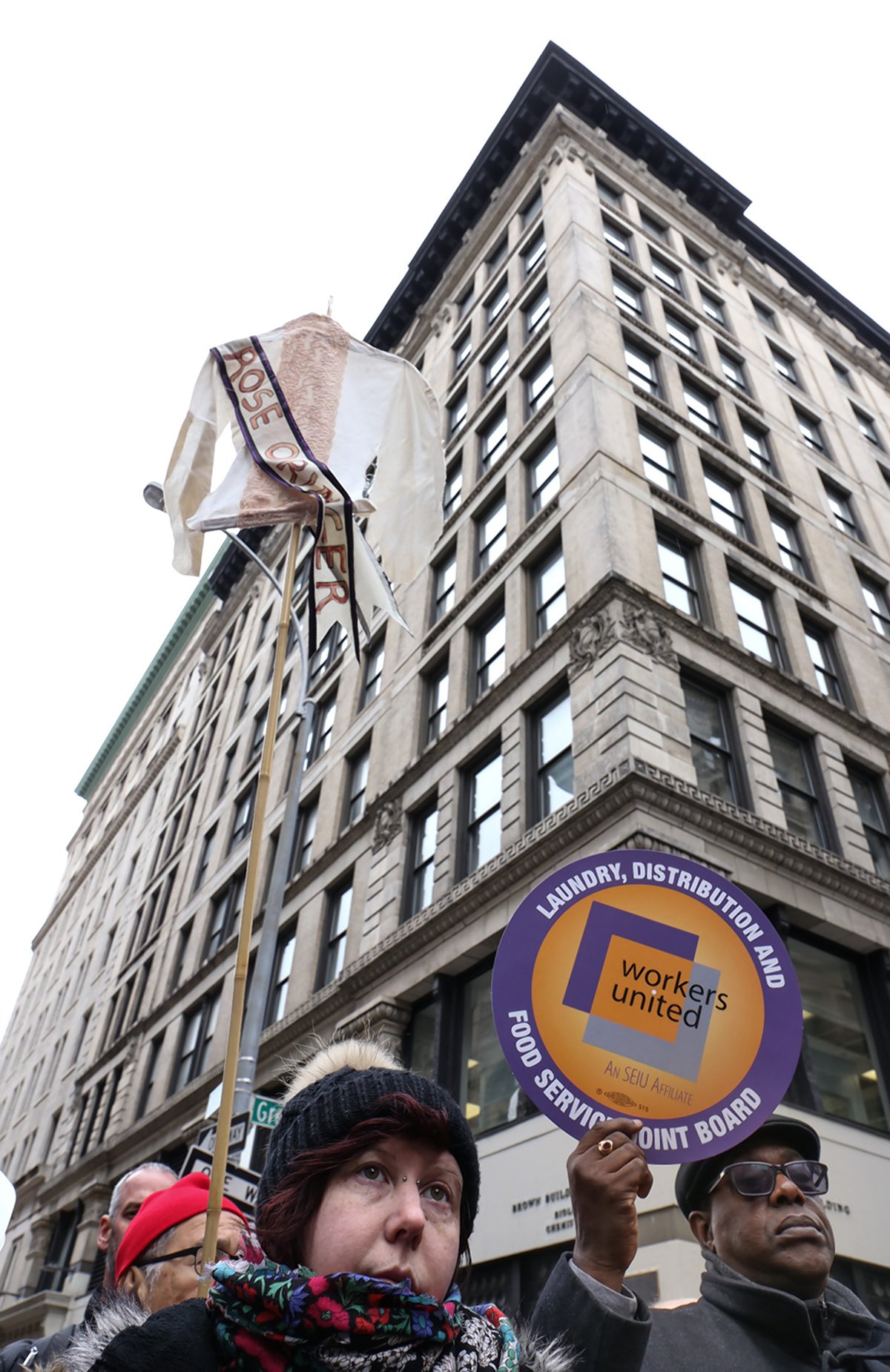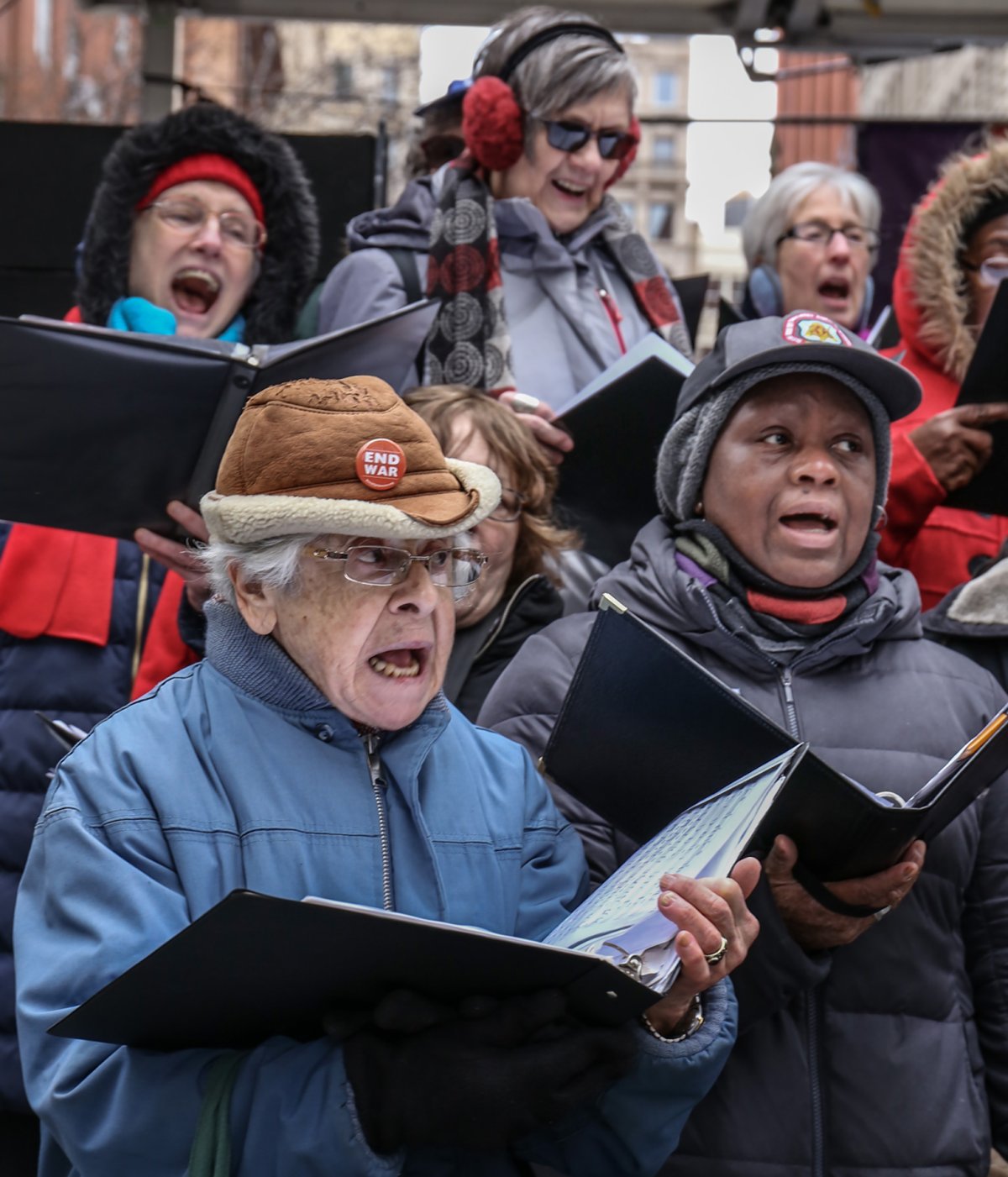
BY TEQUILA MINSKY | Last Friday, family members and politicians, along with union members and their leaders, gathered at Washington Place and Greene St. to commemorate the 106th anniversary of the Triangle Shirtwaist Factory Fire.
On March 25, 1911, 146 workers, mostly young Italian and Jewish women, were killed during the blaze, when exit doors were locked and the ladders of the fire engines did not reach the building’s upper floors. Most of the victims were workers on the ninth floor and jumped to their death to avoid the flames.
Michele Esterman comes every year from Connecticut to pay tribute to her great-aunt Yetta Goldstein, one of the 146 who perished. Yetta emigrated from Bialystok, Poland, to Paterson, N.J. Wanting to be near fashion, she moved to New York to work in a garment factory.
“Yetta wanted to be a Gibson Girl,” said her great-niece.
One of the worst industrial accidents in New York City, the Triangle Shirtwaist Fire led to a number of worker-safety laws. Worker protection — the need for proper training, which is often lacking, even today — was a theme of the commemorative program.
Vincent Alvarez, president of the New York City Central Labor Council, AFL-CIO addressed the crowd, was among the speakers.

“One hundred forty-six workers died that day because profits were deemed more important than safe working conditions and the lives of workers,” he said. “The safety regulations born of this tragedy continue to help protect workers. But we must remain vigilant to ensure that all workers have the training and equipment needed to keep them safe on the job.”
“It’s still happening today,” said Edgar Melendez, from the Bronx, a member of the NYC Community Alliance for Worker Justice, as he recounted being hired by a crane-and-rigging company as a welder, but was put to work signaling the tower crane without any training.
“They didn’t offer safety training or technical classes,” he said. “They just threw me out on the job, and told me I’d learn as I went along.”
Thomas Roumbakos, another member of the Alliance for Worker Justice, said that as a safety fire consultant, he routinely is told not to call the Department of Buildings, Occupational Safety and Health Administration or site safety when there are problems.

Public Advocate Letitia James got the crowd chanting “Pass 1447,” referring to the bill that Councilmember Jumaane Williams introduced in City Council to increase safety standards for all construction workers in New York City.
Other speakers included Manhattan Borough President Gale Brewer, Assemblymember Deborah Glick and Mary Anne Trasciatti, of the Remember the Triangle Fire Coalition, which is spearheading the drive to create a new memorial for the disaster on the building that was the site of the tragedy, which today is owned by New York University.
Musical tributes from the New York City Labor Chorus lightened the mood, as did duo Twangtown Paramours, who traveled from Nashville to sing their original song “Chains” inspired by the fire’s 100th anniversary.
The event culminated with the reading aloud of the victims’ names, plus the laying of flowers in front of the building in memory of each worker who died in the tragedy.
A Fire Department ladder truck from the same company that responded to the conflagration in 1911 ceremonially raised a ladder to the building’s sixth floor, which was as high as it went in 1911, despite the fire starting on the eighth floor.

















